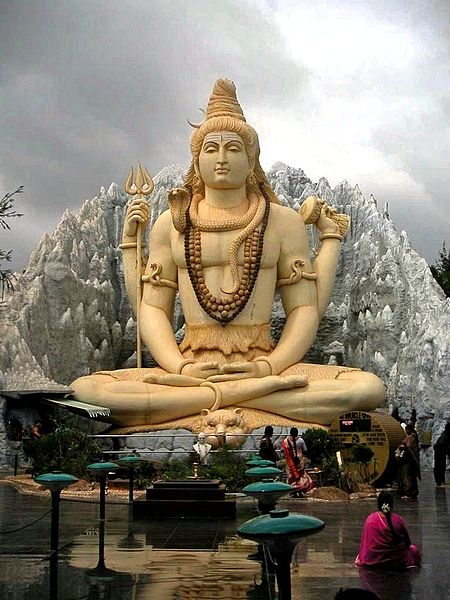 Hinduism places emphasis on worship of nature. Indus Valley was the cradle of the religion. Hence, the way of life afforded by its geography holds religious significance as well. The Indus River was vital to the survival of its surrounding inhabitants; so worship of river god is a basic tenet. This also explains the reverence accorded to river Ganges, the dependents of which refer to it as Ganga Mata (Mother Ganga). The plains on either side of these rivers provide the necessary fertile grounds for growing subsistence crops. And at the time of composition of the Vedas, domesticated cattle was the only means to plough the land. Cows also provide other necessary nutrients in the form of its milk. What started as reverence had evolved into devotion and worship. This social aspect of life in the two millennia before Christ explains why Cows are regarded as sacred animals even today. So, at the time of its formation, Hinduism was little more than a practical means of livelihood. But the religion’s links to every day life became weak ever after making it an abstract and independent school of thought. Another cultural aspect of the Hindu heartland was the appreciation of sensual arts. Vatsyayana, a courtier and a scholar, belonged to the Brahmin caste, which is the upholder of Hindu religious practices. Vatsyayana is also the author of Kamasutra, a book about copulation techniques and libidinous pleasures. Here is a classic example of the merging of the divine with the erotic. In other words, adopting the techniques recommended in Kamasutra is the same as practicing Hinduism. This theme is evident in other Hindu scriptures and monuments as well. A good example of the former is the mention of Kundalini (the vital force of creation) in some other holy scriptures. The most striking example of the latter is the stone temple at Kajuraho, whose walls and pillars depict Kama (the sex god) in all his manifestations (Van Horn, 2006).
Hinduism places emphasis on worship of nature. Indus Valley was the cradle of the religion. Hence, the way of life afforded by its geography holds religious significance as well. The Indus River was vital to the survival of its surrounding inhabitants; so worship of river god is a basic tenet. This also explains the reverence accorded to river Ganges, the dependents of which refer to it as Ganga Mata (Mother Ganga). The plains on either side of these rivers provide the necessary fertile grounds for growing subsistence crops. And at the time of composition of the Vedas, domesticated cattle was the only means to plough the land. Cows also provide other necessary nutrients in the form of its milk. What started as reverence had evolved into devotion and worship. This social aspect of life in the two millennia before Christ explains why Cows are regarded as sacred animals even today. So, at the time of its formation, Hinduism was little more than a practical means of livelihood. But the religion’s links to every day life became weak ever after making it an abstract and independent school of thought. Another cultural aspect of the Hindu heartland was the appreciation of sensual arts. Vatsyayana, a courtier and a scholar, belonged to the Brahmin caste, which is the upholder of Hindu religious practices. Vatsyayana is also the author of Kamasutra, a book about copulation techniques and libidinous pleasures. Here is a classic example of the merging of the divine with the erotic. In other words, adopting the techniques recommended in Kamasutra is the same as practicing Hinduism. This theme is evident in other Hindu scriptures and monuments as well. A good example of the former is the mention of Kundalini (the vital force of creation) in some other holy scriptures. The most striking example of the latter is the stone temple at Kajuraho, whose walls and pillars depict Kama (the sex god) in all his manifestations (Van Horn, 2006).
References:
Sharma, Arvind, (1996), On the distinction between karma and rebirth in Hinduism.. Asian Philosophy, Mar1996, Vol. 6 Issue 1, p29, 7p;
Van Horn, Gavin, (2006), Hindu Traditions and Nature: Survey Article., Environment Culture Religion, Vol. 10 Issue 1, p5-39, 35p.